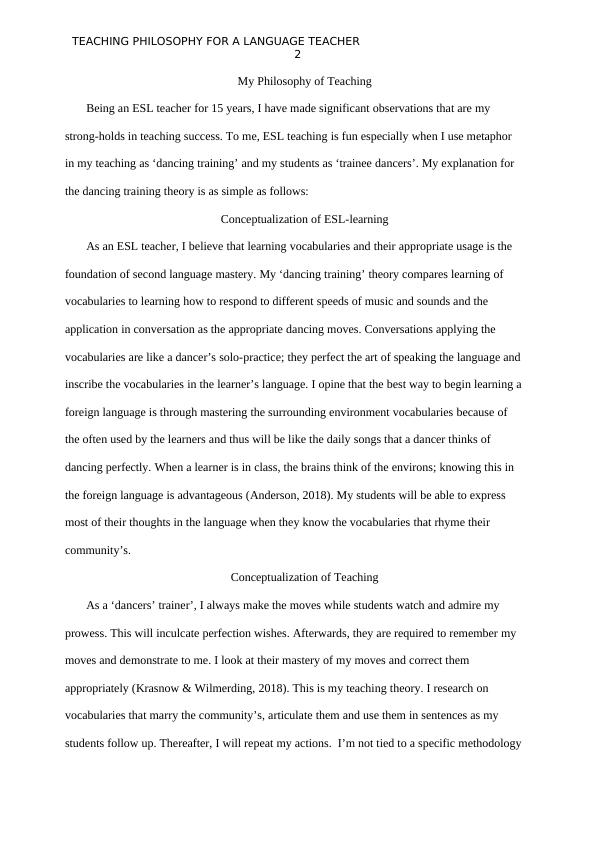Teaching Philosophy for a Language Teacher
Write a teaching philosophy as an ESL/EFL teacher with experience teaching in 5 countries, mentioning second language acquisition (SLA) theory/ies and explaining how it is realized in the language classroom. Also, mention the ability to teach in a multi-cultural setting and create a collaborative and inclusive environment.
Added on 2022-11-16
About This Document
Teaching Philosophy for a Language Teacher
Write a teaching philosophy as an ESL/EFL teacher with experience teaching in 5 countries, mentioning second language acquisition (SLA) theory/ies and explaining how it is realized in the language classroom. Also, mention the ability to teach in a multi-cultural setting and create a collaborative and inclusive environment.
Added on 2022-11-16
End of preview
Want to access all the pages? Upload your documents or become a member.


